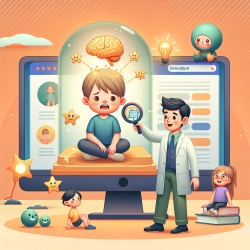Introduction
The use of prescribed psychotropics in children and adolescents is a topic of significant concern and interest within the field of mental health. The article "The impact of prescribed psychotropics on youth" by Lakhan and Hagger-Johnson provides a comprehensive review of the issues surrounding the prescription of these medications to young people. This blog aims to distill the key findings from the research and discuss their implications for practitioners, particularly those involved in online therapy services like TinyEYE.
Key Findings from the Research
The research highlights several critical points regarding the use of psychotropics in youth:
- Many psychotropics prescribed to children are unlicensed or off-label, raising concerns about their long-term impact.
- The dramatic rise in prescriptions over the last decade is not matched by a corresponding increase in the prevalence of the disorders these drugs are meant to treat.
- Commonly prescribed psychotropics like Methylphenidate (MPH) and Selective Serotonin Reuptake Inhibitors (SSRIs) have limited research supporting their safety and efficacy in children.
- There are five myths influencing the prescription of psychotropics to children, including the belief that children are little adults and that drugs are preferable to alternative treatments.
Implications for Practitioners
For practitioners, especially those providing online therapy services, understanding these findings is crucial for making informed, data-driven decisions about treatment plans. Here are some steps practitioners can take:
- Question Assumptions: Practitioners should critically evaluate the myths surrounding psychotropic prescriptions and consider alternative treatments such as cognitive-behavioral therapy (CBT) which may be more appropriate in some cases.
- Stay Informed: Keeping up-to-date with the latest research can help practitioners understand the evolving landscape of psychotropic use in youth.
- Advocate for Research: Encourage and support further research into the safety and efficacy of psychotropics for children and adolescents to build a more robust evidence base.
- Collaborate with Families: Engage with families to discuss the potential risks and benefits of psychotropic medications, ensuring that they are part of the decision-making process.
Encouraging Further Research
The research underscores the need for more studies into the long-term effects of psychotropics on the developing brain. Practitioners can play a role in advocating for such research by collaborating with academic institutions and supporting initiatives that aim to fill the gaps in current knowledge.
Conclusion
As practitioners, it is essential to base treatment decisions on accurate, age-appropriate data. By questioning prevailing myths and advocating for further research, we can ensure that the use of psychotropics in youth is both safe and effective. For those interested in delving deeper into the original research, please follow this link: The impact of prescribed psychotropics on youth.










